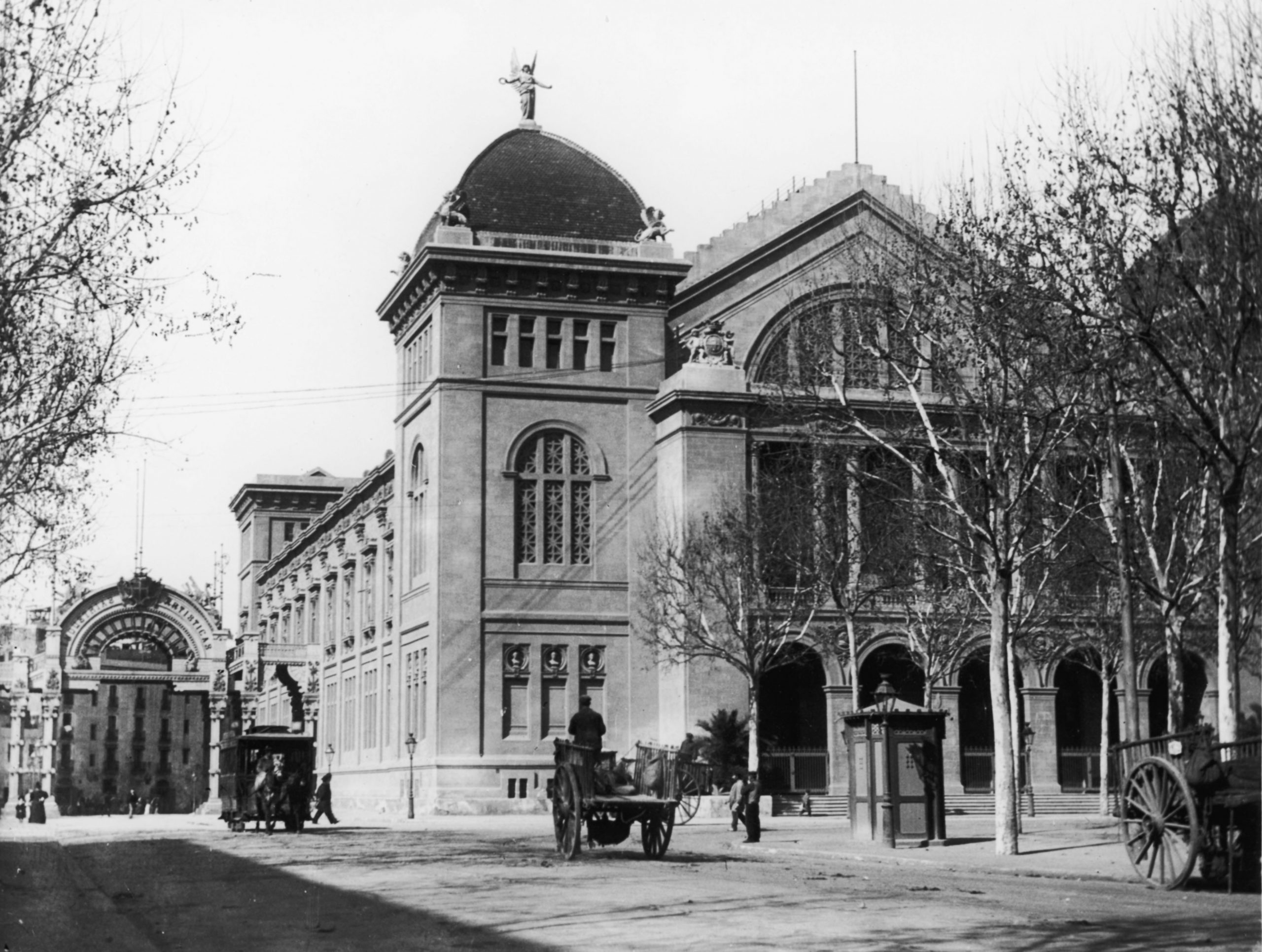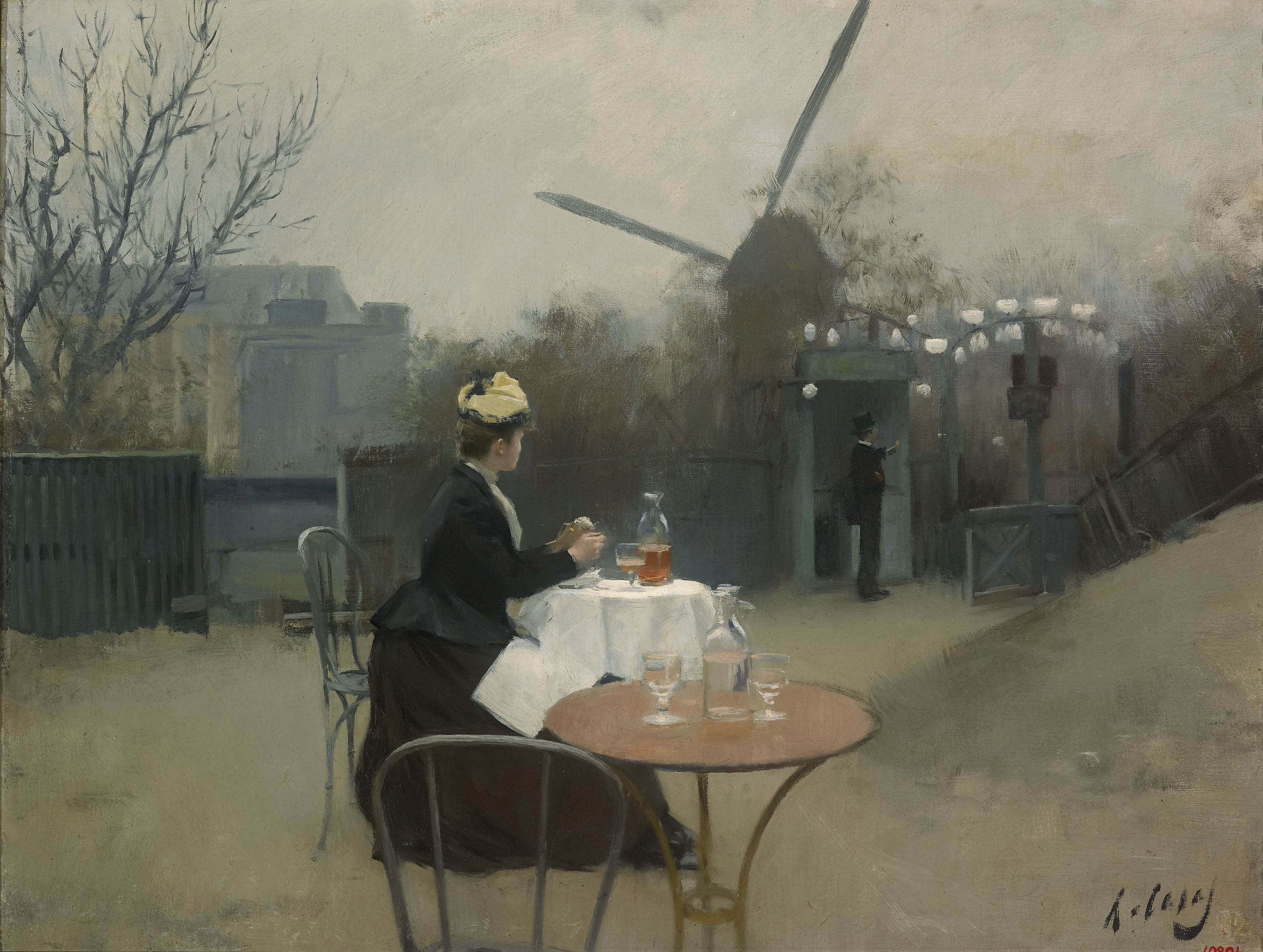Manel Garcia Clavero
Between 1888 and 1911 Barcelona experienced one of the most important artistic episodes of the modern age. It was a moment when institutional and public awareness of culture was awakened, an initiative that was part of the wish to make the city a capital on a par with the great European centres. To achieve this, it was necessary to provide it with first-rate cultural facilities that would serve to offer society culture and education. It is for this reason that once the Universal Exhibition of 1888 was over, the Museums Board was founded, a body that created the first public museums and collections in the territory, establishing a purchasing policy that would ensure the preservation and diffusion of the artistic treasures of Catalonia.
Of the Board’s many initiatives, the most important for invigorating the city’s artistic life were the Fine Art Exhibitions. Imitating the French salons with regard to format, duration and organization, these events were intended to serve as showcases of modernity, the new art scene, and as a meeting point for the leading artistic centres in the world. The Catalan and the French exhibitions also shared one of the fundamental reasons for holding them: the acquisition of works, as they were the only occasion when the Board – according to its purchasing policy – was able to purchase contemporary work, so if exhibitions were not held the collections could not grow, something that occasionally led to missed opportunities for purchasing major pieces of modern Catalan art.

Fine Arts Palace, 1891.
The origins of these exhibitions must be sought in the fine art section of the 1888 Exhibition, which served as a trial and a point of reference. From then on the Board organized exhibitions every two years, bringing together, in the organization and the judging panels, important names such as Josep Lluís Pellicer, Puig i Cadafalch, Domènech i Montaner, Raimon Casellas, Salvador Sanpere i Miquel, Manuel Fuxà, Dionis Baixeras, Josep Llimona and Carles Pirozzini. Held in the now demolished Palau de Belles Arts – an eclectic building constructed for the 1888 Universal Exhibition and designed by August Font i Carreras – each edition had painting, sculpture, drawing, engraving and decorative arts sections.
The Exhibitions of the Nineteenth Century
After defining the legal framework and the regulations that governed them, the Board announced the first exhibition for 1891, repeating in 1892, 1894, 1896 and 1898.These five exhibitions served to established the periodicity of events eagerly awaited among artistic circles. At the same time they were crucial for defining a clear purchasing policy that would lay the foundations of the Museum of Fine Art, the embryo of what would later be the Barcelona Museum of Modern Art, and therefore the origin of the Museu Nacional’s current modern art collection.

Ramon Casas, Plein air, Paris, c. 1890-1891.
This first series coincided with the irruption of Modernisme, the reason why major examples of the movement were presented at these events. Singular works such as Plein Air by Ramon Casas, Laboratory of La Galette by Santiago Rusiñol and Reading by Joan Llimona were exhibited at the 1891 edition, and purchased afterwards. In 1894 Rusiñol’s Romantic Novel was purchased, along with Leaving the Ball by Romà Ribera. They were joined by the sculpture The First Cold by Miquel Blay. There were also famous participations like that of a young Picasso with First Communion – now in the Picasso Museum – at the 1896 edition, this being the only time the artist took part in the Catalan exhibitions. In 1898 Casas exhibited another essential work in his production: The Corpus Christi Procession Leaving the Church of Santa Maria, which entered the museum. Sculpture projects were also presented that would later beautify the city, such as the Fountain of Diana, the work that Venanci Vallmitjana exhibited in the 1898 edition and which was erected in the Gran Via in 1919; or the monumental Virgin of Mercy that crowns the dome of the Basilica of Our Lady of Mercy, a work 6.5 metres tall that Maximí Sala exhibited in 1891 with the aid of a large crane.
Exhibitions in the New Century
Joan Llimona. V Exposicion Internacional de Arte, April 1907. ©Museu Nacional d’Art de Catalunya
The halting of exhibitions between 1898 and 1907 was due to the grave social and political crisis that followed the disaster of 1898, and to the subsequent cultural reformulation arising from the emergence of the Lliga Regionalista, together with the reorganization of the Board between 1902 and 1907. These events made the exhibitions in the new century even more forceful, so that when the time was right, the 5th International Exhibition was announced in 1907. It was the biggest and best grand exhibition of fine art held up to then, an event that brought together as many as 2,000 works coming from countries as far away as Japan, and with first-rate participation by foreign artists. This was the occasion when the crème of French Impressionism was exhibited in the city for the first time, a great group of 40 pieces with names like Monet, Manet, Sisley and Renoir.
Catalog of the V Exposición Internacional de Bellas Artes e Industrias Artísticas : catálogo ilustrado. Barcelona.
Unfortunately, despite the efforts made, none of them entered the museum. Sculptures by Rodin and Duchamp-Villon could also be admired, a series of paintings by the Englishman Frank Brangwyn, a sanguine by the Pre-Raphaelite Burne-Jones, plus examples of Italian Divisionism with Gaetano Previati and the Futurism of Giacomo Balla.
Edward Burne-Jones, Study of a Female Head, 1894. ©Museu Nacional d’Art de Catalunya
The Catalan section in 1907 was also a great spectacle: while it served to present post-Modernisme as a fully defined movement, with works by Ricard Canals, Ramon Pichot, Joaquim Mir and Isidre Nonell, Modernisme made a triumphant entry with a gallery of honour reserved for Casas and Rusiñol, along with the sculptures of Miquel Blay, Enric Clarasó, Josep Llimona – who presented Desolation – and Carles Maní, from Tarragona. Ignacio Zuloaga was the big Spanish winner, with a gallery of honour, and his painting My Cousins was purchased. In this edition two landscapes by Mir, The Rock in the Pond and Thundery Sky, were also purchased, as well as La Toilette by Ricard Canals, a work of pronounced French influence.

Joaquim Mir, The Rock in the Pond, c. 1903. ©Museu Nacional d’Art de Catalunya
The last exhibition, the 6th International Exhibition in 1911, was unable to match the high artistic level achieved in 1907, but even so 1,700 works were displayed and it served to clearly show the irruption of Noucentisme, with notable participations by Clarà – who came from Paris – and also Torres-Garcia. Spanish participation was notable, with the participation of the leading artists who were producing traditional views of regional Spain, names like Antoni Muñoz Degrain, Eduardo Chicharro, José María López Mezquita, Gonzalo Bilbao, and Julio Romero de Torres, whose The Retable of Love was purchased, a work that had previously been presented in Madrid, where it generated a major controversy.

Julio Romero de Torres, The Retable of Love, 1910. ©Museu Nacional d’Art de Catalunya
As we can see, each edition served to significantly increase the collections, purchasing works that have occasionally become part of the canonical narrative of Catalan art, while others have fallen into oblivion, whether due to changes in taste or to their scant relevance in the modern-day context. Beyond the artistic aspect, these events were a real mass spectacle, a social event that was intended to democratize culture and encourage art criticism, which experienced a true golden age with names as important as Miquel i Badia, Raimon Casellas and Eugeni d’Ors, each of them championing their own aesthetic principles.
Historiador de l'art
Universitat de Barcelona









